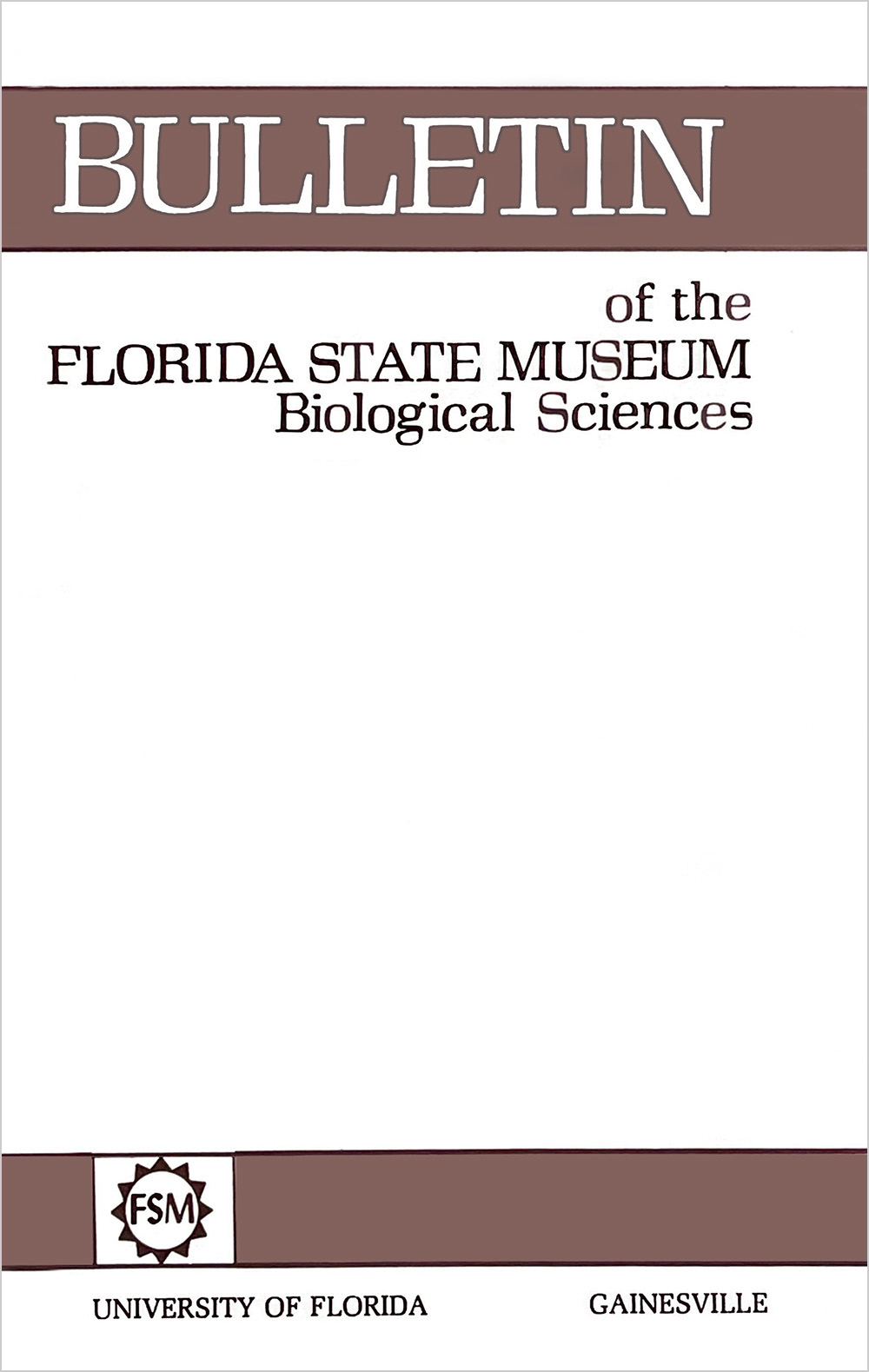Ecology and Behavior of the Jamaican Woodpecker
DOI:
https://doi.org/10.58782/flmnh.yuas8525Abstract
Jamaican Woodpeckers (Melanerpes radiolatus) occur wherever habitats are suitable, from sea level to high elevations. Their presence depends on the occurrence of trees necessary for feeding, nesting, and roosting. Highest densities were recorded in a wooded pasture and a mesophytic forest, with an average of 22 and 20/km, respectively. The high figures for these locales are possibly related to their structural complexity-well developed vertical stratification, high tree species diversity, and numerous epiphytes, all of which increase both the area available for foraging and the amount of foods present. Censuses in Jamaica and Florida indicate that in some habitats the Jamaican Woodpeckers maintain comparable or higher densities and biomass than do several species of Florida woodpeckers in comparable habitats. Possible explanations are: Jamaican Woodpeckers have more resources available in the absence of other species with similar habitats, Jamaica has fewer predators than Florida, Jamaican habitats are more complex than comparable Florida habitats, and primary productivity is probably greater in Jamaica than in comparable Florida habitats.
No selection pressure for differential niche use between the sexes appears to have acted on the Jamaican Woodpecker-the sexes are structurally monorphic, forage in similar fashions, are syntopic, and take the same food. Food and foraging sites, which would be the two most important selective forces, appeared to be more abundant in Jamaica than on some other islands. When food is plentiful, both sexes profit by having a longer bill, for large predators (implied here by longer bill lengths in birds) eat either an equal or a greater range of foods than smaller predators. Bill size is also a good indicator of food size: birds with longer bills usually obtain larger prey items than birds with smaller bills. As greater prey size implies greater biomass, which in turn implies more calories and more energy, the sexes are thus equally efficient in obtaining energy from the environment. In addition one might argue that by decreasing both the body size and bill size of the female, the female will be less efficient in protecting the nesting hole against competitors, of which several species are present on Jamaica.
The predominant foraging methods of the Jamaican Woodpecker are fruit-eating (28%), probing (28%), and pecking (20%) Gleaning, sallying, and probing into bromeliads accounted for the remainder.
In the Jamaican Woodpecker's diet both animal and vegetable matter are well represented, comprising 58.2% and 42.7%, respectively, of the total volume. The large and varied numbers of foods taken strongly suggest that the Jamaican Woodpecker is diverse and opportunistic in its feeding habits. The foraging behavior diversity of the Jamaican Woodpecker and of seven species of Florida woodpeckers was measured by the Shannon-Weaver information theory formula. The foraging diversity index of the Jamaican Woodpeeker was higher than any one species of the Florida woodpeckers studied, and was almost equivalent to the pooled foraging diversity indices of Florida woodpeckers, 1.59 to 1.72 respectively. No methods of feeding were noted in the Jamaican Woodpeckers that the mainland woodpeckers did not use, but the foragingmethods were more evenly distributed in the different categories. There is no evidence that limitations in the range or amounts of available food resources is the factor underlying these changes in feeding methods, rather certain zones are incompletely exploited by other species in Jamaica; and hence it is profitable for M. radiolatus to extend into them.
Jamaican Woodpeckers occupy overlapping home ranges and territorial defense is restricted to the nest vicinity. The extended breeding season of at least 10 months is most likely a response to the more uniform tropical climate that provides sufficient food throughout the year.

